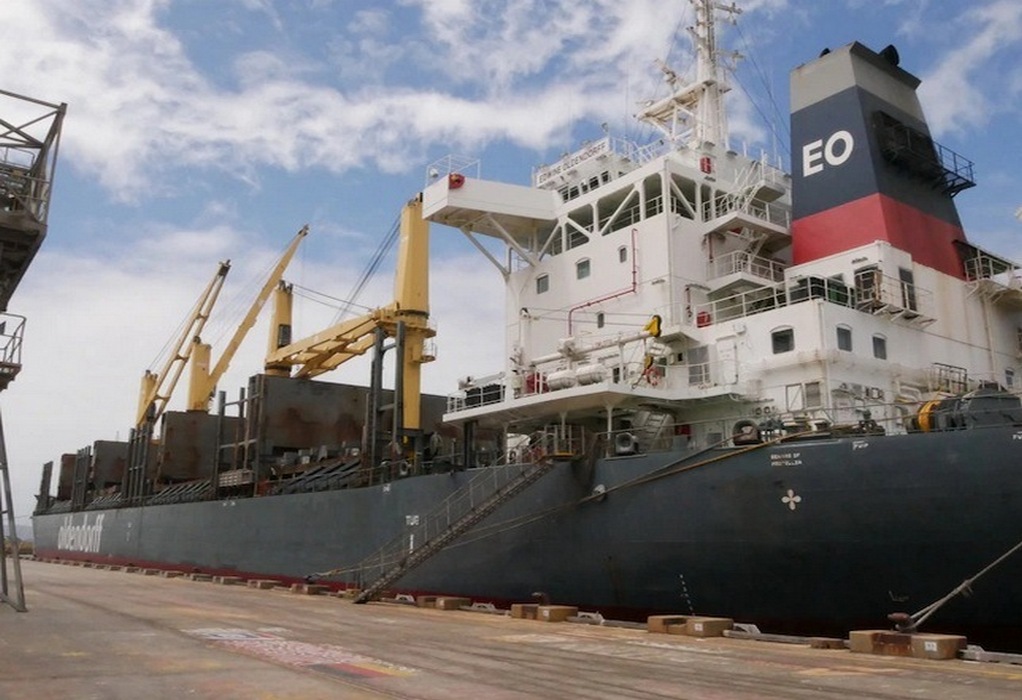The country’s first grain ship powered by biofuel is set to leave port on Sunday, only the second time the renewable fuel alternative has been used in an Australian export ship.
Edwine Oldendorff is carrying 30,000 tonnes of malting barley from Albany in WA for Vietnam in a trial commissioned by grain handling cooperative CBH.
“We’ll be measuring carbon emissions during this trip. We’re targeting a 15 per cent reduction,” CBH chief trading officer Jason Craig said.
The ship was narrowly beaten to the Australia-first milestone by a biofuel-run ship that left Gladstone in December.
Ironically that ship, which reduced its emissions by 9 per cent, was carrying 160,000 tonnes of coal to India for steel manufacturing.
Both trials used recycled vegetable oil blended with bunker oil, the fossil fuel that powers almost all of global shipping.
What is bunker oil? What is biofuel?
Bunker oil has a think consistency similar to tar. It is the heaviest and least-refined fossil fuel derived from crude oil.
“When you treat crude oil and refine it, the last two grades are road tar and [bunker] fuel oil. Diesel is a more refined form of fuel oil,” Oldendorff Carriers WA port captain Gautam Malhotra said.
As the cheapest fuel available, it is used extensively by commercial ships.
Ships like Edwine Oldendorff burn around 29 to 30 tonnes of fuel a day, Mr Malhotra said.
“I’ve seen large container ships use up to 70 or 80 tonnes a day.”
William Reinsch, the chair of international business at the US-based Center for Strategic and International Studies, said the shift away from bunker fuel was both desirable and inevitable.
“The open question is what will take its place?”
Biofuels like ethanol and biodiesel are produced from natural biomass — this could be vegetable oils, sugar cane, corn or animal waste products.
These fuels burn cleaner than fossil fuels but still produce emissions.
‘Not a huge step forward’
“Biofuel as a supplement is not a huge step forward, but on the other hand, bunker oil is heavier and the emissions are greater,” Mr Reinsch said.
The amount of biofuel which can be blended for use in existing engines is limited. It is hoped trials like the Edwine Oldendorff’s will reveal just how much can be used and how much emissions can be reduced.
“At this stage, it’s hard to tell [how efficient the fuel will be],” Mr Malhotra said.
Mr Craig confirmed CBH had paid a premium to fund the trial but did not reveal how much more expensive the vegetable oil blend was than regular bunker oil.
“There are some small extra costs, but it’s still economic and makes business sense,” he said.
Regardless, existing ship engines cannot run on pure biofuel.
To significantly curb or eliminate emissions from shipping, a long-term replacement is needed.
Picking and choosing
“Green hydrogen, which is produced by separating hydrogen from water, has zero emissions and long term is the best way to go, but it’s not yet commercially viable,” Mr Reinsch said.
Unlike biofuel, hydrogen cannot be blended with conventional fossil fuels and requires all-new engines and fuel storage systems.
“If price were the only criteria, biofuels would have an edge but this is about climate,” Mr Reinsch said.
“But I think the search is going to be for the greenest technology, not necessarily the cheapest.”
The world’s largest shipping company, Maersk, has pledged to achieve net zero emissions by 2050 using yet another fuel alternative, methanol — a form of alcohol.
Last year, Maersk announced plans to build eight container ships from 2024 that will run on “carbon-neutral methanol”.
“To us, this is the ideal large vessel type to enable sustainable global trade on the high seas,” Maersk chief of fleet and strategic brands Henriette Hallberg Thygesen said.
“We are confident we will manage to source the carbon-neutral methanol needed.”
With billions of dollars of investment flowing into both methanol and hydrogen, the race is on to replace bunker oil altogether, however biofuel cannot be written off long term.
“We have a very active biofuel industry in the US and most of it is ethanol which comes primarily from corn,” Mr Reinsch said.
“It has not yet seized on the shipping alternative, but I think they’ll get there because the US is in the process of converting its automobile fleet to electric.
“That’s going to reduce demand for gasoline and ethanol and the corn growers will be looking for new places to sell.”
Source: ABC
Tags: Alternative Fuels, Australia, Biofuel, Edwine Oldendorff



Recent Posts
Robert Allan Ltd. to Design Fully Electric AmpRA 3600 Tug for Tianjin Port
U-Ming Marine Conducts First Bunkering of FAME B24 Biofuel
DNV Validates Electric Hydrogen’s HYPRPlant for Safety, Efficiency and Commercial Readiness
Nepal Eyes Green Hydrogen Future with Policy Push and Hydropower Potential
India Tests First Hydrogen-Powered Rail Coach at ICF Chennai
Scandlines Nears Delivery of Zero Emissions Ferry Following Successful Sea Trials
India faces emission roadblocks with rising net-zero demands
Green Energy Resources invests in two electric Liebherr LHM 550